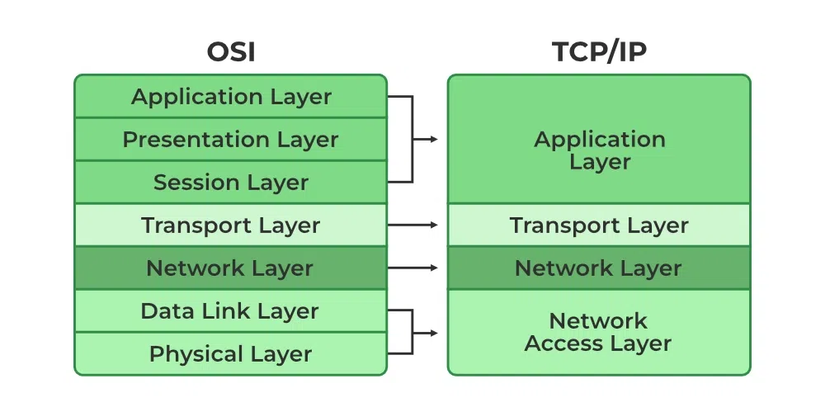The Network Layer: Digital Postal Service
Imagine the network layer as an incredibly efficient postal system for data. Just like how postal workers ensure package reaches the right address, the network layer makes sure your data packets find their way across complex global networks.
What Exactly is the Network Layer?
The network layer is the third layer in the OSI (Open Systems Interconnection) model. Its primary job is routing – essentially acting like a super-smart GPS for digital information. It determines the best path for data to travel from its source to its destination, handling addressing and traffic management along the way.

OSI Model
The OSI model consists of seven distinct layers, each with specific functions:
Application Layer: This is where user interaction occurs, involving applications like web browsers and email clients.
Presentation Layer: Responsible for translating data formats between the application layer and the network.
Session Layer: Manages connections and sessions between devices.
Transport Layer: Ensures reliable data transfer, error-checking, and segmentation of data.
Network Layer: Handles routing and addressing of packets across networks.
Data Link Layer: Translates binary data into signals for transmission and manages physical addressing.
Physical Layer: Involves the actual hardware that transmits signals over various media.
TCP/IP Model
The TCP/IP model simplifies the OSI structure into four layers:
Network Access Layer: Combines functions of the OSI's physical and data link layers, managing how data is framed and transmitted.
Internet Layer: Corresponds to the OSI's network layer, focusing on logical addressing (IP addresses) and routing.
Transport Layer: Similar to the OSI's transport layer, it ensures end-to-end communication and reliability.
Application Layer: Encompasses aspects of the OSI's application, presentation, and session layers.
IP Protocol: The Digital Address System
Internet Protocol (IP) is like the postal code system of the internet. It provides a unique addressing scheme that helps route data packets to their exact destination.
IP Version 4 (IPv4): The Classic Addressing System

IPv4 is the most widely used IP version. It uses a 32-bit address format, typically represented as four decimal numbers separated by dots. For example: 192.168.1.1.
Key Characteristics of IPv4:
-Supports approximately 4.3 billion unique addresses
-Uses a decimal dot-decimal notation
-Becoming increasingly scarce due to the explosion of internet-connected devices
Address Types in IPv4
Public IP Addresses: Globally unique addresses used on the internet
Private IP Addresses: Used within local networks (like your home or office)
Loopback Addresses: Special addresses that refer to the local machine (127.0.0.1)
IP Version 6 (IPv6): The Future of Internet Addressing
As we ran out of IPv4 addresses, IPv6 came to the rescue. It's like upgrading from a small apartment complex to a massive, infinite city of digital addresses.
IPv6 Features:
-Uses 128-bit addresses
-Represented in hexadecimal format
-Supports an astronomically large number of unique addresses (340 undecillion – that's a real number!)
-Example address: 2001:0db8:85a3:0000:0000:8a2e:0370:7334
Why IPv6 Matters?

-Solves the address exhaustion problem
-Improved security features
-Better support for modern network requirements
-Enhanced performance for mobile networks
Internet Control Protocols: The Traffic Managers
Internet control protocols are like the traffic police and management systems of the digital highway. They ensure smooth, efficient data transmission and handle network communication challenges.
Key Internet Control Protocols
ICMP (Internet Control Message Protocol)
-Primarily used for diagnostic and control purposes.
-Sends error messages when network problems occur.
-The famous "ping" command uses ICMP to test network connectivity.
ARP (Address Resolution Protocol)
-Translates IP addresses to physical machine addresses (MAC addresses).
-Acts like a digital interpreter between network layers.
DHCP (Dynamic Host Configuration Protocol)
-Automatically assigns IP addresses to devices on a network.
-Ensures efficient IP address management.
-Prevents address conflicts and simplifies network configuration.
Real-World Implications
Understanding these protocols isn't just tech geekery – it's crucial in our hyper-connected world. From ensuring our video call doesn't freeze to protecting critical infrastructure, these protocols are the invisible guardians of digital communication.
Looking Ahead: The Evolution of Network Protocols
As we generate more data, connect more devices, and push technological boundaries, network protocols will continue to evolve. The transition from IPv4 to IPv6 is just one example of how technology adapts to our growing digital needs.
